Dr. Trigo, José Manuel
Director of Oncology, Research and Innovation

To be able to make a correct decision regarding treatment, it is particularly important to diagnose spread of the disease (when organs other than the lung are affected) as well as the histological type of lung cancer. The diagnostic process is therefore incredibly important and may require several diagnostic tests
These diagnostic tests include those shown below. However, bear in mind that to reach a diagnosis your doctor may require further additional tests.
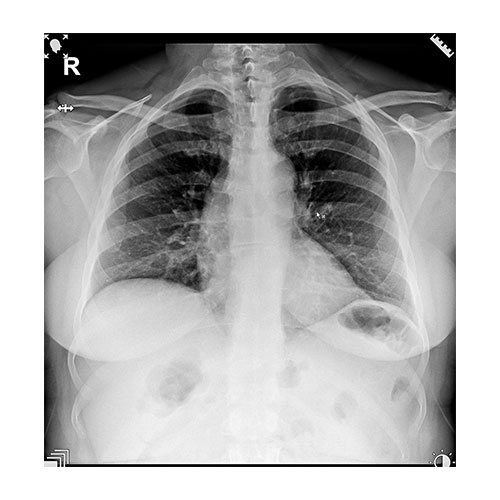
Using X-ray, a chest X-ray, allows us to visualize structures inside the body and evaluate whether there are abnormal areas in the lungs.
A chest X-ray is generally the first diagnostic imaging test your doctor will order. If any suspicious areas are found, your doctor may request other diagnostic tests to study the area in more detail.
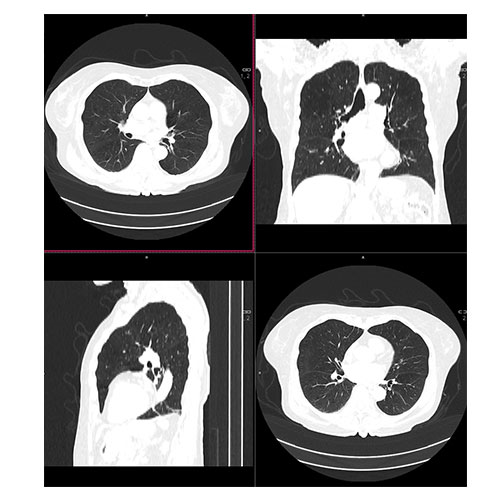
A CT or computerised tomography scan provides images of the body in slices or sections, from different angles, which are then reconstructed by a computer system to obtain a larger, more detailed 3-dimensional image.
A chest and abdominal CT scan can evaluate lung cancer and identify whether it has spread to regional (nearby) lymph nodes and whether there are any distant metastases.
When a patient with lung cancer is to undergo radical treatment (surgery, radiotherapy, or radical chemotherapy treatment) it is important to verify that the cancer has not spread to the brain, treatment can then be focused locally, but any undetected disease would therefore remain.
In these cases, a Brain CT or MRI is essential to confirm that the cancer has not spread to the brain.
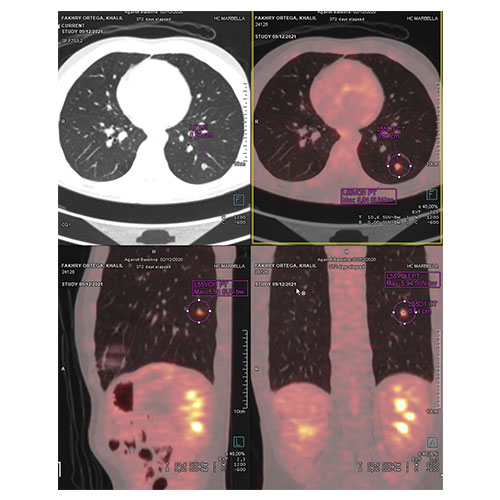
This diagnostic test, provides both anatomical and metabolic information relating to the tumour, enabling us to both locate lesions and tell us how they behave.
It is used in patients with CT-localised lung cancer, who must undergo radical treatment, to ensure that there are no distant metastases.
In a PET study, radioactive sugar molecules are injected into the body. Lung cancer cells and metastases absorb sugar more quickly than healthy cells, in such a way that they are highlighted during the study.
HC Marbella’s high-resolution PET-CT incorporates a respiratory gating system. This system synchronizes PET imaging with respiratory motion, resulting in much clearer images of lung lesions, allowing detection of lung micronodules. Thanks to this technology, unnecessary lung biopsies are reduced by 45%, as it provides a clearer distinction between what is a lesion and what is not.
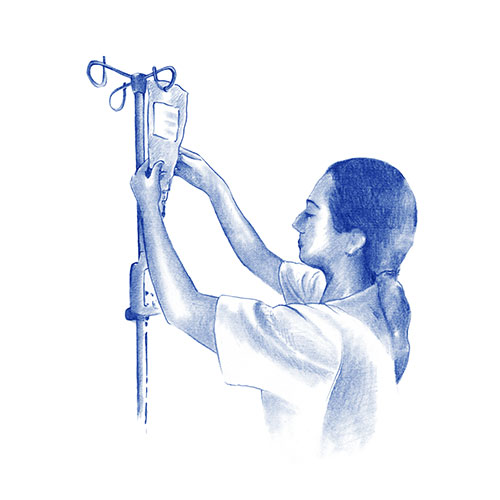
Lung biopsy allows us to obtain a sample of tissue from the suspicious area which is then analysed by the medical pathologist.
This biopsy allows us to:
Biomarker determination testing identifies whether lung cancer could respond to targeted or personalised therapy which target these biomarkers. If these biomarkers do not exist, personalized therapy is not effective.
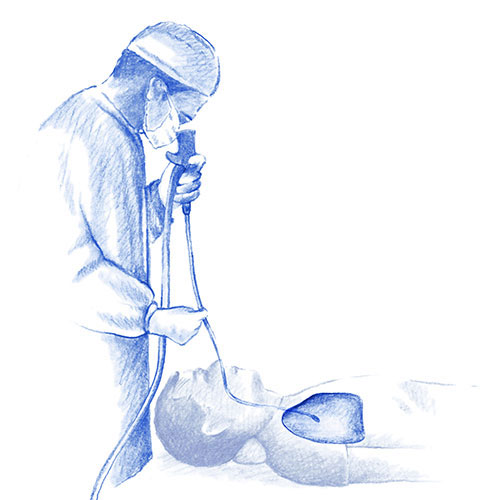
During bronchoscopy, the doctor passes a thin, flexible tube with a light at the tip through the mouth or nose, down through the trachea, and into the airways of the lungs.
This procedure may be performed by a surgeon or respiratory physician (a doctor who specializes in the diagnosis and treatment of lung diseases). The tube enables the doctor to see inside the lungs. Small instruments inside the tube can extract small samples of tissue and fluid for analysis by the pathologist. Patients receive a mild anaesthetic during bronchoscopy.
This is a surgical procedure to obtain a biopsy of mediastinal lymphadenopathy. This technique is performed in patients who are scheduled to undergo surgery.
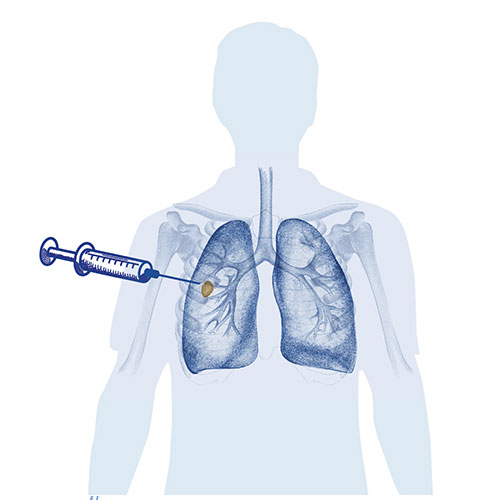
Sometimes a biopsy must be obtained by puncturing the lung through the chest wall.
After numbing the skin with a local anaesthetic, a specialist radiologist, called an interventional radiologist, inserts a small needle into the chest and guides it directly into the lung tumour.
The doctor uses the needle to aspirate a small sample of tissue for analysis. The radiologist often uses a chest CT scan or a special X-ray device called a fluoroscope to guide the needle.
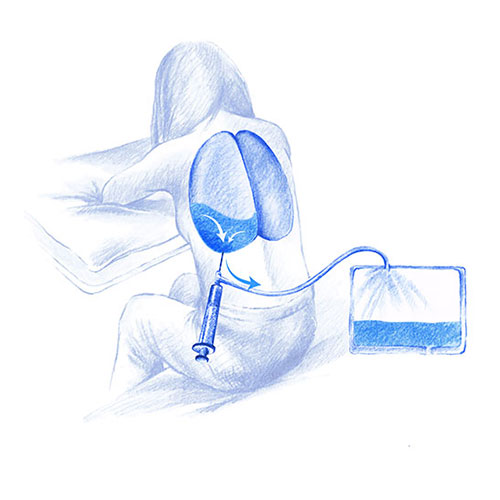
When there is fluid in the pleura, it may sometimes be necessary to aspirate the pleural fluid to test it. This procedure is called thoracentesis.
Local anaesthesia is given, and a needle is inserted through the chest into the area between the lung and chest wall where fluid may accumulate. An area of lung with a fluid collection is white on a chest X-ray, the area where the puncture is to be performed is indicated. Fluid is then removed and tested for cancer cells. Finally, the patient’s wound is dressed.
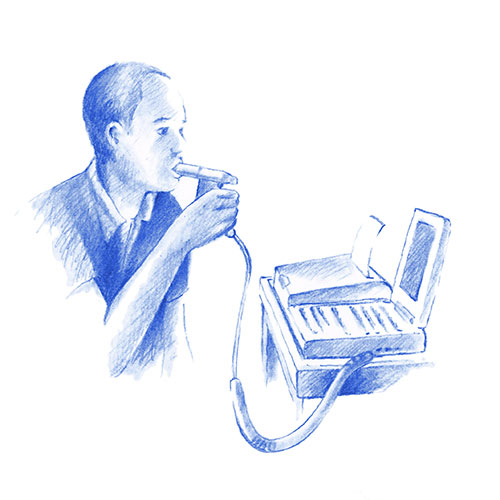
Spirometry is a test which shows the patient’s lung capacity.
It is important to confirm this in patients who are going to undergo surgery and/or lung radiotherapy.
Dr. Trigo, José Manuel
Director of Oncology, Research and Innovation
Dr. Aguilar PerezGrovas, Ricardo
Neumology Specialist
Dr. Sedano Ferreras, Paula
Radiotherapy Oncology Specialist
Dr. García Baltar, José Antonio
Especialista en Radiofísica Hospitalaria
Dr. De Castro, Francisco Javier
Medical specialist in Radiology and Internal Medicine
Tel.: +34 952 908 628
+34 609 148 799
952908898 Oncology
951829978 Diagnosis by imaging
951829947 Gynecology
952908897 Fertility
951829947 Physiotherapy